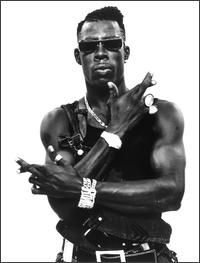The conventional aspects of drum and bass music videos are showing a performance (sometimes live) by the artist/s, or containing a narrative concept most likely filled with abstract images, or quite commonly a blending of the two. An example of this is the video to 'Propane Nightmares' by Pendulum; the narrative section shows the group as part of a religious cult trekking through a creepy forest into a desolate house where the cult proceeds to each commit suicide; these somewhat disturbing scenes are intercut between the band performing onstage in the house during the carnage, before attempting to escape.
This mixture of performance and narrative is roughly what we have done, though with more emphasis on the narrative. Obviously the singer and rapper we have are not the real ones but our point comes across. Our video does not contain any abstract visuals, although we have a couple of symbolic images but no abstract ones. So whilst we do follow the conventional style of a drum and bass music video, the fact that it carries a social message makes our video a little different for its genre. This is because although many music videos do carry social themes, such as the video to 'Where is the Love?' by The Black Eyed Peas, the genre of drum and bass does not seem to go down that way.

One of the symbolic images is of a church
at the start of the video before the characters
are even introduced; its image represents
the peace and unity both which is part of
the anti-crime/violence message of our
video and which the delinquents eventually
come to find at the end of the video.

The next symbolic image is the final shot of
the video, which shows the three masks thrown
on the floor. This image symbolises the characters'
sins thrown away and forgotten, and is very
important as this action of 'taking off' violent
and anti-social ways is what the video encourages
those real-life versions of our characters to do.
The lyrics and mood of the song contrast heavily as the lyrics are distressing and desperately wishful, but the melody and musical arrangement of the song are upbeat and fun. This contrast is similar in our video. The content is depressing, but we have presented the visuals an entertaining way through the shakes and zooms as well as the near-parodic scene of the policeman rapping.

The use of distressing lyrics being sung in an
upbeat way is shown well by Julia as she is seen
smiling and has a positive presence. It is as if her
presence in the video, fading in and out of the
violence, is like a ray of light which eventually
guides the characters to the right path.
Although we only have two brief brutal-ish moments (the blood splashing out and the cigarette jabbing), one may think that such violence is inappropriate for music videos. Well there are many music videos which contain very grim content and (mostly in heavy metal music videos) a fair amount of gore. A good example of a grim content in a music video of the drum and bass genre is the video to 'Smack My Bitch Up' by The Prodigy; this video depicts a night out filmed from a first-person perspective and shows scenes of drinking and driving (including a hit and run incident), drug use, vandalism, violence, and sex. So our video is actually quite pleasant! If this was a real video, it is quite likely they would have an 'edited' version which would cut the shot of the victim being kicked in the head, and of the cigarette in the eye.
The editing to most drum and bass music videos consist of really fast and flashy shots and shaky camera movements, which rapidly zoom in and out and spin around distorting the visuals. A good example of this is the music video to Reprazent's song 'Who Told Ya', in which VIDOEOFO. We have followed this tradition by giving the video the same style of shaky movements and rapid zooms which we achieved through editing. Had our video been done professionally, there would have also been a vast array of rapid shot cuts but that was too complicated for us.

Here is an example of the zoom and visual
distortion.

Another aspect to making our video look
realistic was contrasting the colour and adding
lenses flare so that it resembles real music videos.
As I mentioned in an earlier post, the most common drum and bass album covers consist of an abstract/unusual image, or of a more straight-up image displaying a set of speakers/ravers/rave paint/music notes. I reckon that our album cover is cohesive with the abstract style drum and bass album covers, not at all with the straight-up style. While not totally abstract, I think that our cover is suitably strange enough as the black-and-white image of the wide isolated landscape with the faded mask raises questions as to what it means.

I find this cover a bit similar to ours as
the image is also shows a long shot of
an empty landscape.

There is no specific tradition for a magazine advert advertising a drum and bass album as they are inspired by the album covers/styles themselves, so the adverts will also be done in one of the two styles I mentioned. Ours is cohesive with our use of the mask on the cover, first insert, and music video as it shows one of the masked characters walking. This is not abstract as it is quite simple but we feel it is an effective image.
































